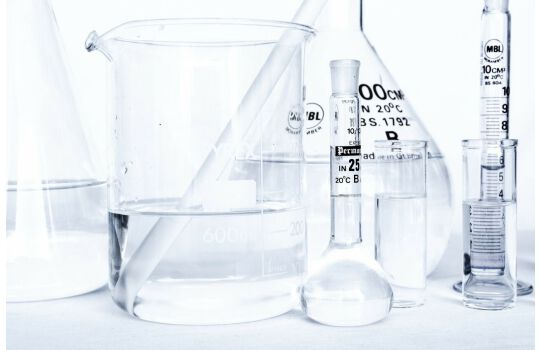Glycerol (/ˈɡlɪsərɒl/;[5] also called glycerine or glycerin; see spelling differences) is a simple polyol compound. It is a colorless, odorless, viscous liquid that is sweet-tasting and non-toxic. The glycerol backbone is found in all lipids known as triglycerides. It is widely used in the food industry as a sweetener and humectant and in pharmaceutical formulations. Glycerol has three hydroxyl groups that are responsible for its solubility in water and its hygroscopic nature.[6]
Contents
1 Structure
2 Production
2.1 Synthetic glycerol
3 Applications
3.1 Food industry
3.2 Medical, pharmaceutical and personal care applications
3.3 Botanical extracts
3.4 Electronic cigarette liquid
3.5 Antifreeze
3.6 Chemical intermediate
3.7 Vibration damping
3.8 Niche Uses
3.8.1 Film Industry
3.8.2 Ultrasonic couplant
3.9 Internal combustion fuel
3.10 Research on uses
4 Metabolism
5 Historical cases of contamination with diethylene glycol
6 Etymology
7 Isomers
8 See also
9 References
10 External links
Structure
Although achiral, glycerol is prochiral with respect to reactions of one of the two primary alcohols. Thus, in substituted derivatives, the stereospecific numbering labels each carbon as either sn-1, sn-2, or sn-3.[7][8][9]
Production
Glycerol is generally obtained from plant and animal sources where it occurs as triglycerides. Triglycerides are esters of glycerol with long-chain carboxylic acids. The hydrolysis, saponification, or transesterification of these triglycerides produces glycerol as well as the fatty acid derivative:
Triglyceride
Fat structural formulae V3.svg
3 NaOH / H2O
Rightward reaction arrow
3 × soap
3 × General sodium carboxylate.svg
glycerol
Glycerine Structural Formula V1.svg
Triglycerides can be saponified with sodium hydroxide to give glycerol and fatty sodium salt or soap.
Typical plant sources include soybeans or palm. Animal-derived tallow is another source. Approximately 950,000 tons per year are produced in the United States and Europe; 350,000 tons of glycerol were produced per year in the United States alone from 2000 to 2004.[10] The EU directive 2003/30/EC set a requirement that 5.75% of petroleum fuels are to be replaced with biofuel sources across all member states by 2010. It was projected in 2006 that by the year 2020, production would be six times more than demand, creating an excess of glycerol.[6]


